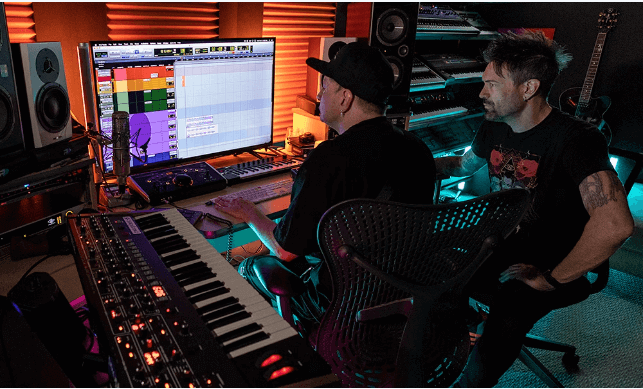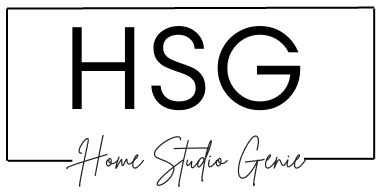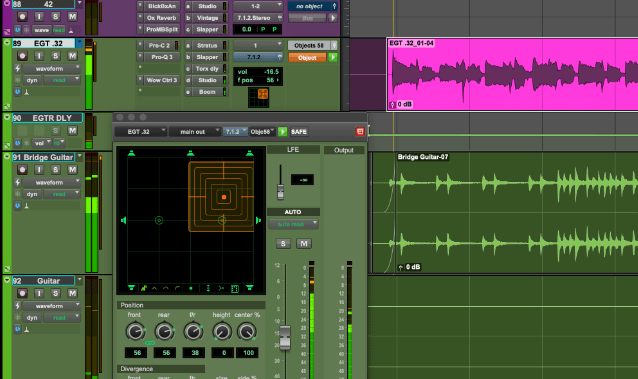So, you’re thinking about learning Pro Tools. That’s great! It’s a powerful digital audio workstation used by professional musicians and audio engineers all over the world.
But how long does it take to learn Pro Tools?
In this article, I will discuss the learning curve of Pro Tools, the resources available for learning, and the process of becoming Pro Tools certified.
So let’s dive in.
How Long Does It Take To Learn Pro Tools?
It takes 4 to 6 weeks to learn the basics of Avid Pro Tools. Prior experience and practice will time eliminate a lot of the learning curve.
Learning Pro Tools 12 is a journey that varies from person to person. We noticed that the time it takes to become proficient in Pro Tools depends on several factors.
These factors include your prior experience with audio production, your dedication to learning, and the amount of time you can invest in practice.
On average, it may take several months to a year for beginners to become comfortable and proficient in using Pro Tools 12.
Can You Learn Pro Tools On Your Own?
Yes, you can definitely learn Pro Tools on your own. With the abundance of online tutorials, forums, and resources available, self-learning has become increasingly accessible.

When I first started my journey with Pro Tools, I didn’t have the luxury of formal training or mentorship.
I relied heavily on online tutorials, forums, and trial-and-error experimentation. It was definitely challenging at times.
But the process of learning on my own allowed me to develop problem-solving skills and a deeper understanding of the software.
Tips for Learning Pro Tools on Your Own
Here are some tips based on my experience that can help you effectively learn Pro Tools on your own:
- Set Clear Goals: Define what you want to achieve with Pro Tools. Do you want to produce your own music, mix tracks, or work as a professional audio engineer? Having clear goals will guide your learning process.
- Start with the Basics: Familiarize yourself with the essential tools, functions, and interface of Pro Tools 12. Focus on understanding the fundamental concepts before diving into more advanced techniques.
- Use Online Resources: Take advantage of the vast array of online tutorials, videos, and articles available. Websites like YouTube, Pro Tools Expert, and Avid’s official documentation provide valuable insights and step-by-step guidance.
- Join Online Communities: Engage with Pro Tools communities and forums. Participate in discussions, ask questions, and share your experiences. Connecting with like-minded individuals can enhance your learning journey.
- Practice Regularly: Dedicate time to practice regularly. Working on your own projects, experimenting with different features, and applying what you learn will accelerate your progress.
- Learn from Real-Life Examples: Study and dissect professional Pro Tools projects to understand how experienced producers and engineers approach their work. This will give you insights into industry-standard practices and workflows.
- Stay Updated: Keep up with the latest updates and advancements in Pro Tools. As technology evolves, new features and techniques emerge. Stay curious and adapt your learning accordingly.
With that said, it’s important to note that learning on your own requires self-discipline, motivation, and perseverance.
I recommend following a structured learning path and practicing regularly to maximize your learning efficiency.
Is Pro Tools 12 Beginner-Friendly?
Yes, Pro Tools 12, the most popular version of Pro Tools, is generally considered beginner-friendly. Avid has implemented user-friendly features and improvements over the years to make Pro Tools more beginner-friendly.
When I first started my journey with Pro Tools, I was using Pro Tools 12. As a beginner, I found the software to be user-friendly and intuitive.
The interface was clean and organized, allowing me to easily navigate through the different menus and functions.
Simplified Workflow
Pro Tools 12 introduced several features and improvements that made it more accessible to beginners.
The streamlined interface and enhanced workflows provided a smoother and more efficient experience.
Tasks such as recording, editing, and mixing were made simpler and more intuitive. This allowed beginners to focus on their creativity.
Step-by-Step Learning
To further aid beginners, Pro Tools 12 offered extensive documentation and tutorials.
The online resources provided detailed instructions, tips, and step-by-step guides to help users get started.
Pro Tools 12 makes tasks easier for beginners to learn and understand the software. These range from setting up audio interfaces, recording instruments, and applying effects.
Compatibility and Flexibility
Pro Tools 12 offered compatibility with a wide range of audio interfaces and plug-ins. This provides beginners with flexibility in their choice of hardware and software tools.
It also allowed me to use the equipment and plugins I was already familiar with. This significantly eased the transition into the Pro Tools environment.
Learning Curve
While Pro Tools 12 was designed with beginners in mind, it’s important to note that there is still a learning curve. A learning curve is associated with any professional-grade DAW.
Learning the fundamental concepts of digital audio recording, editing, and mixing takes time and practice.
With that said, Pro Tools 12 provided a solid foundation and user-friendly interface to facilitate the learning process.
Tips for Beginners
If you’re new to Pro Tools 12 or any version of Pro Tools, here are some tips to make your learning journey smoother:
- Use Tutorials and Resources: Take advantage of the extensive tutorials and documentation available online. Websites like Avid’s official Pro Tools resources, YouTube tutorials, and forums can provide valuable insights and guidance.
- Practice Regularly: Dedicate time to practice using Pro Tools regularly. The more you use the software, the more comfortable and proficient you will become. Experiment with different techniques and explore the various features to expand your knowledge.
- Join Pro Tools Communities: Engage with the Pro Tools community by joining forums and online groups. Share your experiences, ask questions, and learn from other users. Connecting with fellow enthusiasts can be both educational and inspiring.
It’s worth mentioning that Pro Tools 12 is a professional DAW and has a steep learning curve.
This is due to its extensive features and capabilities. It’s essential to invest time in understanding the fundamentals and gradually explore the more advanced functionalities.
Which Is Easier To Learn, Pro Tools Or Logic?
The debate between Pro Tools and Logic often arises among music producers and audio engineers. Logic Pro is often the winner in this debate because of how easy it is to get started with.
Both DAWs have their strengths and learning curves. We must mention that we found Logic to be more beginner-friendly it is.
Pro Tools is widely used in professional studios and offers advanced post-production capabilities.
Logic, on the other hand, is known for its user-friendly interface and intuitive workflow. This makes it more accessible for beginners.
With that said the choice between Pro Tools and Logic depends on your specific needs and preferences as a producer.
What Is The Best Way To Learn Avid Pro Tools 12?
The best way to learn Pro Tools 12 is to combine theoretical knowledge with hands-on practice.
To learn Avid Pro Tools 12 effectively, we advise beginners to follow a structured learning path.
Here are some steps you can take to enhance your learning experience:
- Start with the basics: Familiarize yourself with the Pro Tools interface, navigation, and essential tools.
- Explore tutorials and online courses: There are numerous online resources, tutorials, and courses available that provide step-by-step guidance on using Pro Tools. Some reputable websites and platforms include Avid’s official Pro Tools documentation, YouTube tutorials, and online learning platforms like Udemy and Lynda.
- Join a community: Engage with the Pro Tools community through forums, social media groups, and online communities. Interacting with fellow Pro Tools users can help you gain insights, tips, and tricks.
- Practice regularly: Practice is crucial for mastering any skill. Set aside dedicated time for experimenting with Pro Tools, working on projects, and honing your techniques.
Top 10 Best Online Resources To Learn Avid Pro Tools
- Avid’s official Pro Tools website
- YouTube tutorials by renowned music producers and audio engineers
- Udemy courses on Pro Tools
- Lynda.com’s Pro Tools tutorials
- Pro Tools Expert forum
- Sound On Sound magazine’s Pro Tools articles and tutorials
- Home Studio Corner website and YouTube channel
- Pro Tools subreddit community
- Pro Tools Help Facebook group
- The Recording Revolution website and YouTube channel
How To Get Pro Tools Certified
Becoming Pro Tools certified is a great way to validate your skills and enhance your career prospects in the music industry.
Avid offers various certification programs, including:
- Pro Tools User Certification: This certification validates your fundamental knowledge and skills in using Pro Tools.
- Pro Tools Operator Certification: The operator certification focuses on advanced techniques and professional workflows in Pro Tools.
- Pro Tools Expert Certification: The expert certification is the highest level of certification, demonstrating your in-depth knowledge and mastery of Pro Tools.
To get Pro Tools certified, you need to pass the respective certification exams conducted by Avid. You can find more information on Avid’s official website.
It will have more info regarding the certification process, exam details, and study materials.
How Much Does It Cost To Get Pro Tools Certification?
Pro Tools certification typically costs from around $400 to $3,000. You can from Avid Certified User, Avid Certified Operator, and Avid Certified Expert.
The cost of getting Pro Tools certification varies depending on the certification level and the method of training you choose.
Here are some examples of the costs involved in getting Pro Tools certification:
- Avid Certified User: This is the entry-level certification and is designed for users who are new to Pro Tools.
The cost of this certification varies depending on the training provider, but it typically ranges from $500 to $1,000.
- Avid Certified Operator: This certification is designed for users who have some experience with Pro Tools and want to learn more advanced features.
The cost of this certification also varies depending on the training provider, but it typically ranges from $1,000 to $2,000.
- Avid Certified Expert: This is the highest level of Pro Tools certification and is designed for users who are experts in using Pro Tools. The cost of this certification is typically around $3,000.
In addition to the cost of the certification, you will also need to purchase the Pro Tools software.
The cost of Pro Tools 12 varies depending on the version you purchase, but it typically ranges from $600 to $1,200.
With a career in audio engineering or music production, getting Pro Tools certification can be a valuable investment.
Certification can help you demonstrate your skills to potential employers and clients. It can also give you the confidence to use Pro Tools for your own production projects.
Here are some of the benefits of getting Pro Tools certification:
- Increased job opportunities: Pro Tools is one of the most popular digital audio workstations (DAWs) in the world, so getting certified can help you make yourself more marketable to potential employers.
- Improved skills: Certification can help you improve your skills in using Pro Tools, which can lead to better audio quality and more creative mixes.
- Increased confidence: Certification can give you the confidence to use Pro Tools for your own projects, whether you’re recording a demo, mixing a live show, or mastering an album.
If you’re interested in getting Pro Tools certification, there are a few things you can do to prepare. These can help you solidify the teachings of your chosen certification or training program.
A few things you can do to prepare:
- Learn the basics of Pro Tools: Before you start taking classes or taking the certification exam, it’s a good idea to learn the basics of Pro Tools. There are many online tutorials and resources that can help you with this.
- Practice using Pro Tools: The more you use Pro Tools, the better you’ll become at using it. Make sure to practice regularly so that you can become comfortable with the software.
- Take a certification class: If you want to get certified quickly, you can take a certification class. These classes typically cover all of the material that is covered on the certification exam.
- Take the certification exam: Once you’re ready, you can take the certification exam. The exam is multiple-choice and covers a variety of topics related to using Pro Tools.
The cost of Pro Tools certification varies depending on the level of certification you aim to achieve.
Avid offers different certification levels, each with its own pricing structure.
We recommend visiting Avid’s official website or contacting their customer support. This will get you accurate and up-to-date information regarding the current certification costs.
To Wrap It Up
We’ve found that learning Pro Tools requires dedication, practice, and a passion for music production.
The time it takes to learn Pro Tools may vary for each individual.
Consistent effort and a structured learning approach can help you become proficient in using this powerful DAW.
Remember to also leverage online resources, join communities, and practice regularly to enhance your skills.
FAQs
Is it necessary to have formal training to learn Pro Tools?
What are the benefits of learning Pro Tools 12?
It is a valuable skill to have if you want to work in the music industry. Pro Tools is also a very powerful program, so it can be used to create high-quality audio projects.
What are some alternative DAWs to Pro Tools 12?
Some alternative DAWs to Pro Tools 12 include Logic Pro, Cubase, and Ableton Live. These DAWs are all similar to Pro Tools, but they have their own unique features.

Mike is a skilled musician, guitar technician, and music producer with a passion for audio and gear. He excels in teaching guitar, editing podcasts/videos, and creating captivating soundscapes using cutting-edge hardware, software, and plugins. Mike’s talent and commitment make him highly sought-after in the industry, inspiring fellow musicians worldwide.


